- Home
- Patrick Robinson
The Delta Solution Page 38
The Delta Solution Read online
Page 38
Salat’s radio operators picked it up, and Haradheere shares in Operation Princess crashed to zero. The only remaining question was whether any of the pirates had made it out alive. No one knew the answer.
EVERY US WARSHIP either actively involved or standing by during the effort to free the Ocean Princess was bound by the navy’s highest rules of classification. There was a complete communications blackout. No one, repeat no one, was permitted to utter one word about the operation.
And that included the recently arrived aircraft carrier CVN-75, the 100,000-ton Harry S. Truman, with eighty fighter/bombers embarked. In this instance, the United States Navy was sworn to secrecy. And the reason had shades of Robin Hood written all over it.
Zack Lancaster, Mark Bradfield, and Andy Carlow had heard the stories of the $78 million stashed away in Haradheere. They wanted the pirate operation and all of its finances smashed. In addition they wanted the money back. They planned to return it to the shipping organizations that had paid it, with the rest going to US Navy charities.
Their biggest fear was if the main players in this all-African enterprise heard the Americans were coming, they would pack up the money and flee to Kenya or somewhere else, never to be heard from again. Hence the highly classified nature of the operation, with a total news blackout, worldwide, every shutter slammed tight, essentially to prevent Salat Mohammed from finding out what had happened on board the Ocean Princess.
At this point, there were about a dozen men who understood the plan, and the leader was the SEAL commander Mack Bedford. He’d been closeted in the captain’s office for almost a half hour on a conference call to General Lancaster and Admiral Bradfield. And he was ready to outline the strategy for the SEALs’ next attack.
They were steaming slowly west, directly toward the coast of Somalia eight hundred miles away. Captain Marks ordered an immediate increase in speed, up to 30 knots, which would get them to within ten miles of Haradheere in twenty-seven hours, around 2100 the following night.
Marks sat at a table with Commander Bedford and the two SEAL chief petty officers, Cody Sharp and Brad Charlton. Lt. Josh Malone was also in attendance. Out on the horizon was the Harry S. Truman, falling into step with the Chafee, which had been designated her official escort.
At the captain’s invitation, Mack sat at the head of the table and told the select gathering that he had been tasked by the Pentagon to destroy the pirate stronghold in the town of Haradheere. He mentioned that the long-range plans for this operation were somewhat in disarray.
“We had always assumed we would launch from Djibouti in a C-130 Hercules and deploy at 26,000 feet, landing close to our target, HALO in the middle of the night.
“That,” he added, “is no longer possible since we are floating around in the middle of the Indian Ocean, where C-130 Hercules transporters are a bit thin on the ground. But we’re still going in.”
He outlined the new operation, which had been finalized with the Pentagon in time to fly a squad of helicopters on board the carrier while she was in Diego Garcia—four Black Hawks and an Army Apache gunship.
“Anyway,” he said, “we’re going to hit Haradheere tomorrow night. We’re going to land on the beach four miles to the north in the Black Hawks. I preferred them to the Sikorsky that landed us on the cruise ship because this garrison is well armed and they have antiaircraft missiles. Couldn’t risk one of them hitting the big guy with all of us on board, wiping out the entire mission.”
“Do we have data on their arsenal?” asked Cody Sharp.
“The CIA is listing that Russian heavy PKM. It’s a heck of a weapon, easily doubles as an antiaircraft gun. But they also have the latest Russian rocket grenades, the RPG7s, handheld, reloadable, antitank. Aside from those they have brand-new state-of-the-art Kalashnikovs.”
“We just hitting the town?” asked Josh.
“Not really,” said Mack. “They have a fortified garrison. I have satellite photos, which I’ll show you in a minute. The walls are about three feet thick, and the only way in is through a massive wooden door.”
“You expecting someone to open it for us?” asked Cody.
“No need,” replied Mack.
“How come?”
“We’re gonna blow the sonofabitch off, that’s why.”
“Jesus,” said Cody.
“Funny, I’d always understood we would deal with the ship, return to base, regroup, and then fly back and deal with the town,” said Josh Malone.
“We were,” said the commander, “when I wasn’t thinking properly. But now it’s more obvious. If you were the pirate money guys sitting there in Haradheere, and you found out what had taken place on the Ocean Princess, and you had close to $80 million tucked away in the garrison, what would you do?”
“Outtahere,” said the lieutenant. “I’d gather that huge bundle of cash and hightail it right out of Haradheere and get myself into a foreign land with the speed of 10,000 antelopes.”
“That’s right,” said Mack. “Because when you hear that the Princess fell to a mighty armed force, which came out of the sky in a helicopter the size of Mount Kilimanjaro and nearly blew the bridge off the ship, you’re calculating that force is coming right after you, probably sooner rather then later.”
“So that’s why we’re attacking Haradheere tomorrow night?”
“Correct. The best decisions tend to make themselves. And right now the pirate bosses do not know what happened out here. There were no survivors, not even their mother ship. There’s no one they can call to get the full scoop on the operation. I’d say that buys us the day and a half it will take us to get in there.”
“Guess that means the carrier will come all the way with us?” asked Chief Charlton.
“Sure does. Tomorrow morning we’ll make a ship-to-ship transfer of all our gear. Tomorrow night we’ll fly off the Truman about ten miles offshore. The Black Hawks will take us in.”
Commander Bedford produced copies of the satellite photographs of the Haradheere garrison. He also distributed diagrams of the compound, which clearly showed the position of doors and windows. It looked as if there was a residence in the northwest corner. According to the CIA dossier, the office building next-door was the likely location of the strong room, where the millions of dollars were kept.
The diagrams marked the location of the guard posts, which gave even the SEALs cause for concern. Normally the intentions of the enemy are regarded as irrelevant, but this crowd was obviously armed with up-todate weaponry, plus rockets and missiles. The issue was never how to avoid being hit and killed but how to destroy the guards and their arsenal before they knew what had hit them.
Commander Bedford had a plan, which they refined until the meeting broke for dinner. Unsurprisingly, the SEALs were far more tired than they realized, and they passed out immediately. No one stirred until the sun was long above the horizon.
They made the ship-to-ship transfer of their gear by helicopter to the carrier. Right after lunch they said good-bye to the crew of Chafee and flew over to CVN-75, where several members of the crew turned out on the flight deck to welcome them aboard.
This took place while the two ships were thundering through the water at more than 30 knots, the carrier powered by two nuclear reactors driving four screws, each with four blades, twenty-one feet across and weighing 66,000 pounds.
They were already six hundred miles closer to the shores of Somalia than when they started, after a twenty-hour voyage from the place where they had destroyed Wolde and his gang. There were still a couple of hundred miles to go, but the two ultramodern warships ate up that kind of distance without breaking stride.
They’d arrive in their ops area on time at 9:00 p.m. and embark the Black Hawks after a final briefing with the four pilots plus the aviators, who would bring in the Apache gunship to pave the way for the opening attack on the garrison.
The latest satellite pictures showed Mack that there was absolutely nothing along the beach immediately north of Haradhee
re. In fact there was hardly anything along the beach north of Haradheere for six hundred miles. Except sand.
In consultation with his two senior chiefs, Cody Sharp and Brad Charlton, Mack had already decided that the helos would come in from the north against a southwest offshore wind, which would deaden the sound. They would land two miles from the town, then walk in to the target. Since there would plainly be some kind of a battle, the walk should be as short as possible.
The SEALs slept most of the afternoon and had dinner together at 1800. As usual, they stayed separate from the rest of the crew, since this remained a highly classified Black Ops mission, and cell phones were still banned.
Shortly before 2100 the huge carrier began to slow down, and Mack ordered everyone to ready their battle harnesses, combat knives, pistols, machine guns, ammunition magazines, hand grenades, rocket grenades, camouflage cream, and their green-and-brown drive-on bandanas.
The combat medics stuffed supplies into their harnesses, morphine and bandages tucked in with the ammunition and night-glasses. They gathered in a large, private recreation room for their final brief. Up on deck the pilots were firing up the Black Hawks.
The only non-SEAL outsiders in the room were the Apache’s pilot and gunner.
“If we get a chance, I’d like to take the pirate chiefs alive,” said Mack. “But I’m not hopeful. Most of you have read the report of that battle several weeks ago when the Haradheere guards wiped out an entire al-Qaeda army, which had been taking a shot at stealing all the pirates’ bread.
“These guys are so well-equipped we cannot take chances. Tonight we go in firing, right behind Jimmy’s opening attack.” Jimmy Shand, the Apache gunner and rocket man, nodded sagely and left the room before everyone else to make his way to the gunship.
“Okay, guys,” concluded Commander Bedford, “there’s a couple of things I want you to have in mind before we go in. These pirate characters are not some band of well-meaning buccaneers just trying to provide for their families. And their propaganda that they never kill anyone is bullshit.
“We think they’re the same guys who took the Niagara Falls and murdered the first mate Charlie Wyatt from Baltimore. They also took the Global Mustang and shot dead two crewmen plus the engineering officer Sam McLean from Brockton, Massachusetts. Remember, when they took the Ocean Princess they shot and killed five Americans, including Captain Lansdale and his bosun.
“These men are ruthless cutthroats. And they’ve turned some of the most popular cruising waters in the world into no-go areas. Not to mention the main tanker routes, which have been altered in order to transport the world’s oil supply.
“These guys have fucked up people’s lives. They’re fucking up half the world, they’re murderers, and our ultimate bosses at the Pentagon want the situation dealt with just as brutally as necessary. Some of the biggest brains in the US military have been wrestling with this problem for months, just looking for a solution.
“And we are that solution—the delta solution, the guys entrusted with sorting this out. And I know darned well you will not let anyone down. Okay, gentlemen, let’s go.”
Delta Platoon set off through the giant carrier: big men making their way up to the flight deck, carrying their packs, machine guns over their shoulders, faces black with cammy cream, the outriders of American frontline muscle.
All the way through the mighty warship, people just stood and watched them in obvious awe. No one knew quite where or what their mission was. But everyone knew that tonight the SEALs were going in.
Occasionally one of the more senior officers would offer a handshake, an expression of goodwill, the goodwill of the 5,000 men on board. Twenty minutes later they were embarked in the four Black Hawks, and shortly after 2230 hours, they took off, one by one, setting course twoseven-zero straight for the coast of Somalia ten miles to the west.
It was a cloudy night and there was a gusty headwind. Mack Bedford sat in the lead helicopter, right behind the pilot, watching the GPS numbers. The journey took less than ten minutes flying at half speed, low level, a hundred feet above the water, line astern.
Up ahead Mack could see the long, white lines of the surf as they neared the beach. The pilot chose a spot behind the sand, where the dunes looked flat and green with eelgrass, suggesting a firm surface, and the Black Hawk put down in a maelstrom of flying sand. The ground was firm, but the pilot nevertheless ran a few stress tests before lowering the full weight of the helo onto terra firma.
Mack Bedford led the nine SEALs out and behind them they could see the other three aircraft coming in to land. One by one, the men and their gear left the helos, which immediately took off again, back to the carrier, where they would become a part of the SEAL home base, ready at a moment’s notice to fly in and either assist or rescue the men who would take the pirate stronghold.
Once they were alone, Commander Bedford assembled the men and took a roll call, insuring every man was right where he was supposed to be, armed, fit, and ready to move. This completed, he signalled the whole platoon to begin the two-mile walk across the dunes. Midnight was H-hour (H for hit). The SEALs would walk in four columns at four miles per hour, allowing time to traverse the soft, sandy ground.
The night was hot and muggy, but the breeze off the land made the air slightly more tolerable to the troops carrying their heavy packs and weapons. Four of them were lifting a couple of big machine guns. Everyone knew they may need to fight heavy fire with similar weapons.
They walked as if Mack Bedford had ordered a Trappist vow of silence. No one spoke; they just gripped their gear and kept going, across the dunes and through the grasses, with the Indian Ocean rolling gently in to their left.
They could see the lights of the town in the distance, but in the allenveloping darkness and the barren landscape, it was hard to judge the precise yardage left. Mack kept pausing to check through the glasses and eventually signalled the platoon to make a right-hand swing and come in from the west, a couple of hundred yards from the wall of the garrison.
He relayed this information to Chiefs Sharp and Charlton, who moved among the SEALs keeping them informed and answering their whispered questions. Finally Mack signalled for total silence and for the guys to go into their crouch as they moved around the fortified garrison without making a sound.
Through the glasses it was just possible to make out the guard stations on the high walls, and Mack could see they were manned. But apparently there had been only one attack on the place in a year, and for the moment he did not detect any sense of urgency or high alert.
Two hundred yards from the west wall, Mack set up the first SEAL RV point, where two of his team would man the communications equipment. This was the vital link for all information between the assault force, the support helicopters, and home base on the carrier. The two comms experts hunkered down in the desert brush, fixed the aerial, and checked cell phones and connections to Mack and the chiefs. Then the whole platoon left them and moved off, travelling parallel to the west wall, well out of sight of the high garrison guards.
Softly they moved across the sand until they reached a point seventy-five yards from the southwest corner of the compound, within sight of the enormous timber gates. Mack could see no guards on the outside in the street, but there was a light on the high wall on the corner. He designated two of his team to slam that corner with a couple of RPGs as soon as they opened their attack.
Mack split the force, placing himself at the head of a group of eighteen SEALs, who were lying flat and ready to charge through the main gate as soon as it was opened. The other eighteen, under Chief Charlton, took their position further south of the compound from where they could deliver vicious covering fire as Mack’s team stormed in and breached the garrison defenses.
Also from that half-hidden position, they could nail down any attack from the town, where it was possible that a reserve force was stationed, in the event of a major attack against them. According to Bob Birmingham, the whole place was involv
ed in piracy on the high seas.
It was fifteen minutes to the midnight H-hour. The SEAL teams fixed the heavy machine guns, one with each of the two groups, both weapons ready to lay down withering fire either toward the garrison entrance or the guard posts.
The minutes ticked slowly by as they lay motionless in the sparse desert brush. With five minutes to go, Mack’s phone vibrated in his harness and he took a call from RV Point One, the SEALs around the other side of the compound.
Apache’s taken off, sir. Heading in right now. ETA four minutes. Over . . .
Roger that, out.
Its rotors beating low over the water, the AH64D Boeing gunship came clattering into the area where the Black Hawks had landed. Then it made a long swing to the south, avoiding the town, before finally turning back up the beach and screaming straight toward the garrison.
Jimmy Shand opened fire approximately two hundred yards from the south wall with two Hellfire missiles—antiarmor HEAT (high explosion anti-tank with a shaped charge). They blew out of the pods and rocketed above the head of the SEALs before blasting into the huge garrison gates with a stupendous explosion that obliterated the entire entrance, flattened both gates into burning matchwood, and knocked down half the wall.
The Apache streaked above the garrison and then made a hard lefthand turn down by the ocean before coming in at speed for a second run. Shand opened up with his nose-mounted M230 chain gun, hammering thirty-millimeter cannon rounds into the entire compound, blasting windows and doors, and mowing down the panic-stricken guard platoon on the main southwest corner wall.
Anyone inside the garrison was rushing for cover. And as they did, Commander Bedford stood up and roared, “LET’S GO, GUYS, RIGHT NOW! . . . GO! GO! GO!”
All eighteen SEALs sprang to their feet and charged forward, machine guns drawn, running hard behind the boss. Through the gaping hole of the gateway they came, four of them peeling right and heading for what looked like a guardroom. Barney Wilkes threw two hand grenades straight through the open window and reduced the entire place to rubble.

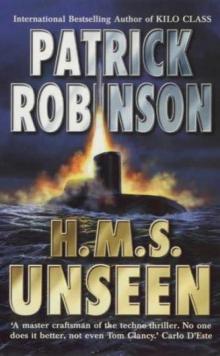 H.M.S. Unseen am-3
H.M.S. Unseen am-3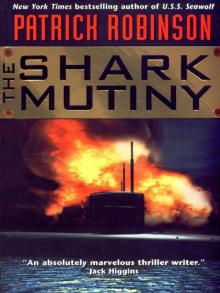 The Shark Mutiny (2001)
The Shark Mutiny (2001)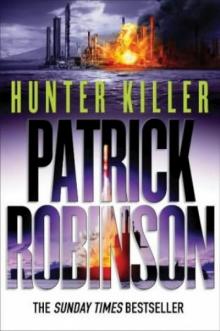 Hunter Killer am-8
Hunter Killer am-8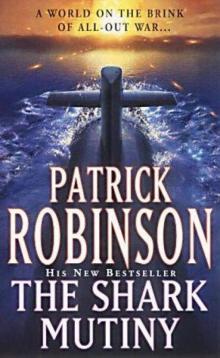 The Shark Mutiny am-5
The Shark Mutiny am-5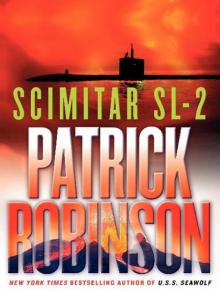 Scimitar SL-2
Scimitar SL-2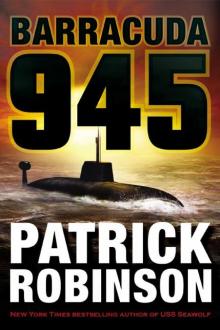 Barracuda 945 am-6
Barracuda 945 am-6 Hunter Killer
Hunter Killer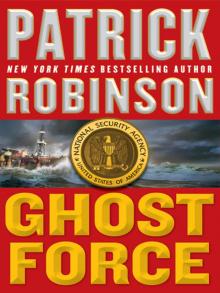 Ghost Force
Ghost Force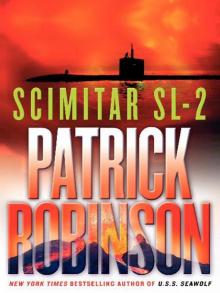 Scimitar SL-2 (2004)
Scimitar SL-2 (2004) Kilo Class am-2
Kilo Class am-2 The Lion of Sabray
The Lion of Sabray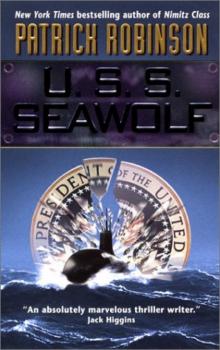 U.S.S. Seawolf am-4
U.S.S. Seawolf am-4 Ghost Force am-9
Ghost Force am-9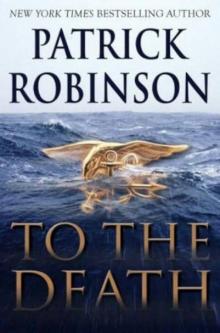 To the Death am-10
To the Death am-10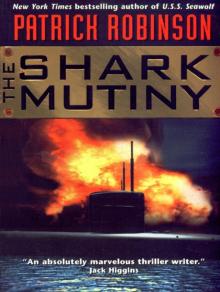 The Shark Mutiny
The Shark Mutiny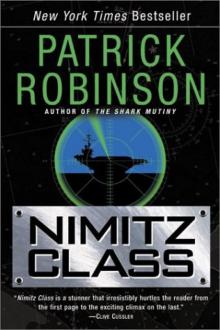 Nimitz Class am-1
Nimitz Class am-1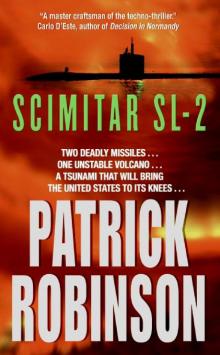 Scimitar SL-2 am-7
Scimitar SL-2 am-7 Barracuda 945
Barracuda 945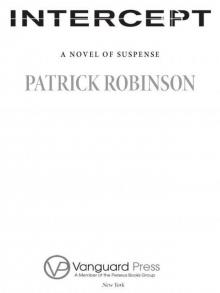 Intercept
Intercept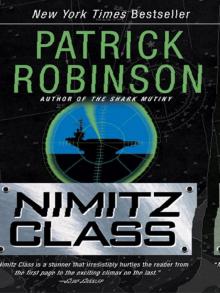 Nimitz Class (1997)
Nimitz Class (1997)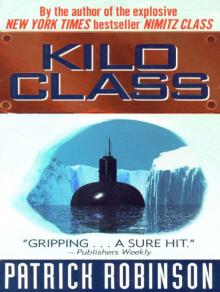 Kilo Class
Kilo Class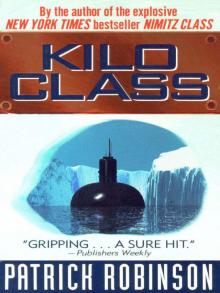 Kilo Class (1998)
Kilo Class (1998) Diamondhead
Diamondhead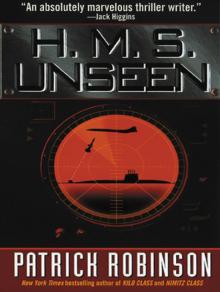 H.M.S. Unseen
H.M.S. Unseen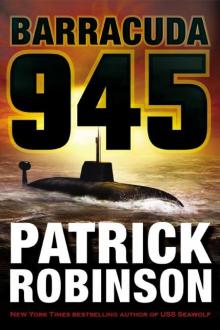 Barracuda 945 (2003)
Barracuda 945 (2003)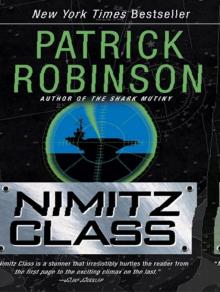 Nimitz Class
Nimitz Class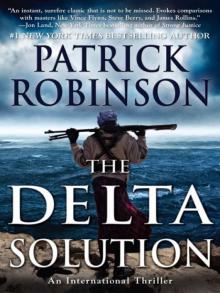 The Delta Solution
The Delta Solution U.S.S. Seawolf
U.S.S. Seawolf